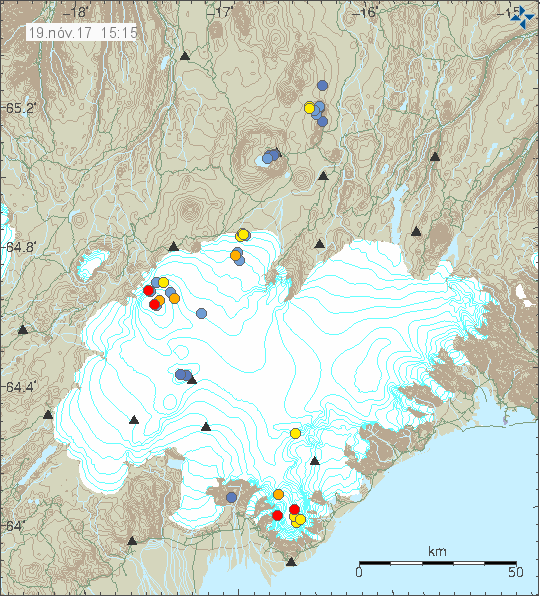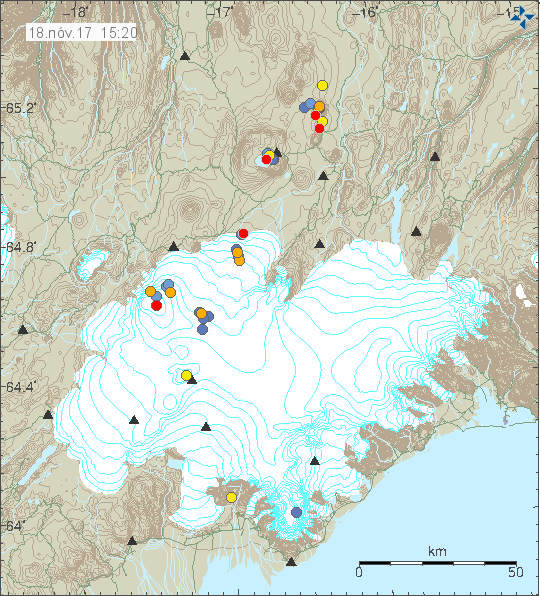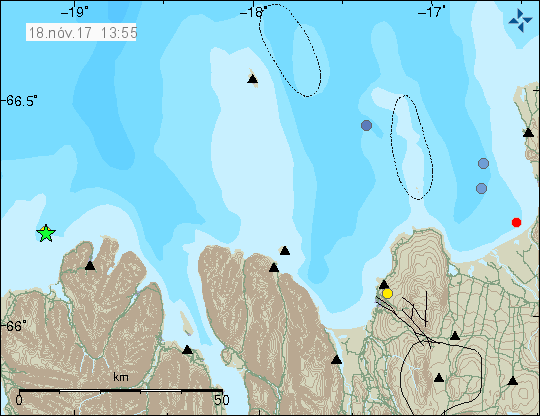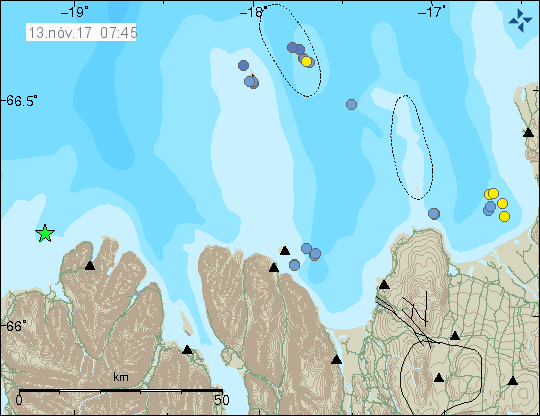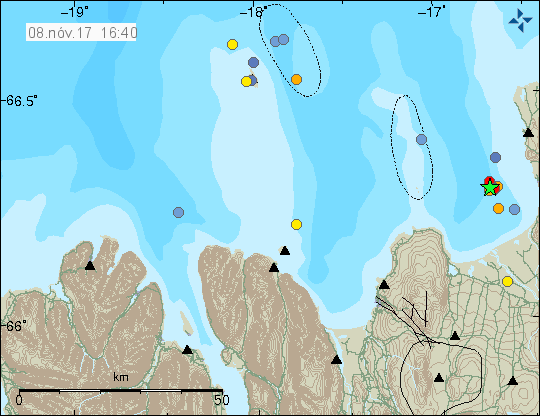For the past few days there has been a earthquake activity in Askja volcano. All of the earthquakes so far have been small in magnitude and only few have reached magnitude above 1,0. This earthquake activity is due to magma movements and its the first time I have seen it reported at this shallow depth (above 10 km depth).
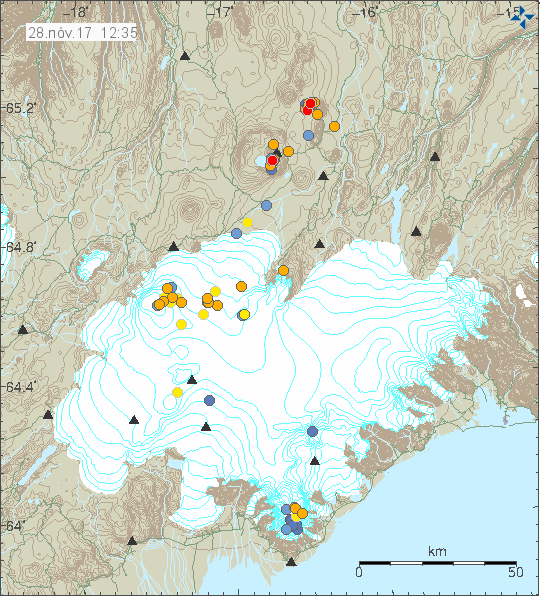
Earthquake activity in Askja volcano. North of Vatnajökull glacier. There is also activity in Herðubreið to the east, but that’s an unrelated activity and is due to tectonic forces in the area. Copyright of this image belongs to Icelandic Met Office.
There are no clear signs that an eruption is about to happen in Askja volcano or in Dyngjufjöll as this area is also called. If an eruption starts in this area outside of any major water area its only going to erupt lava with minimal risk. Explosive eruption due to water is also a possibility but those are impossible to predict.


